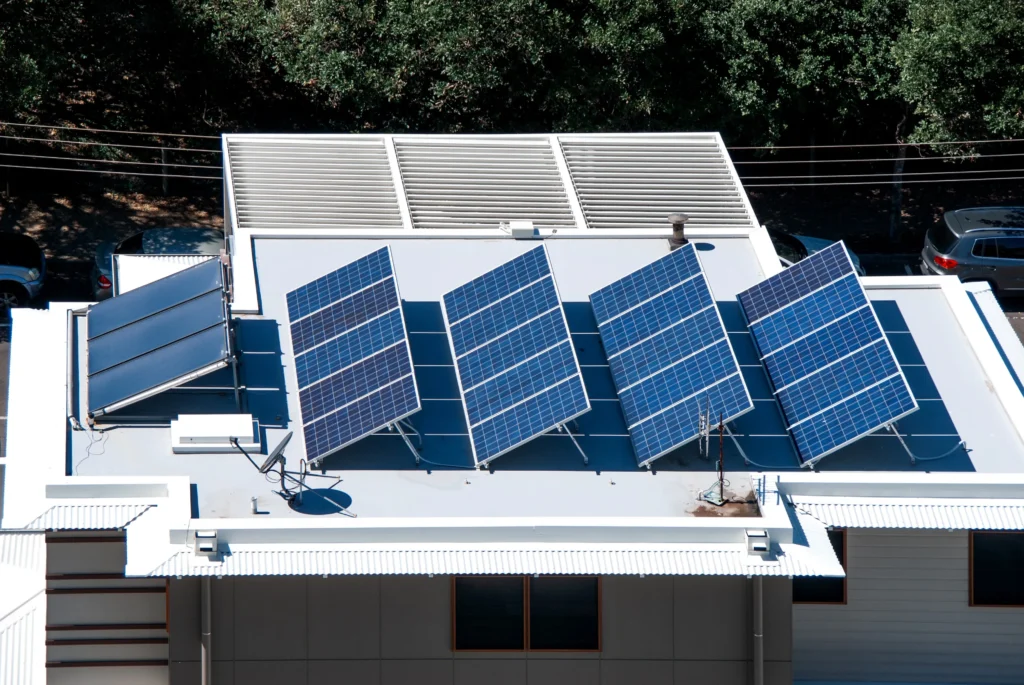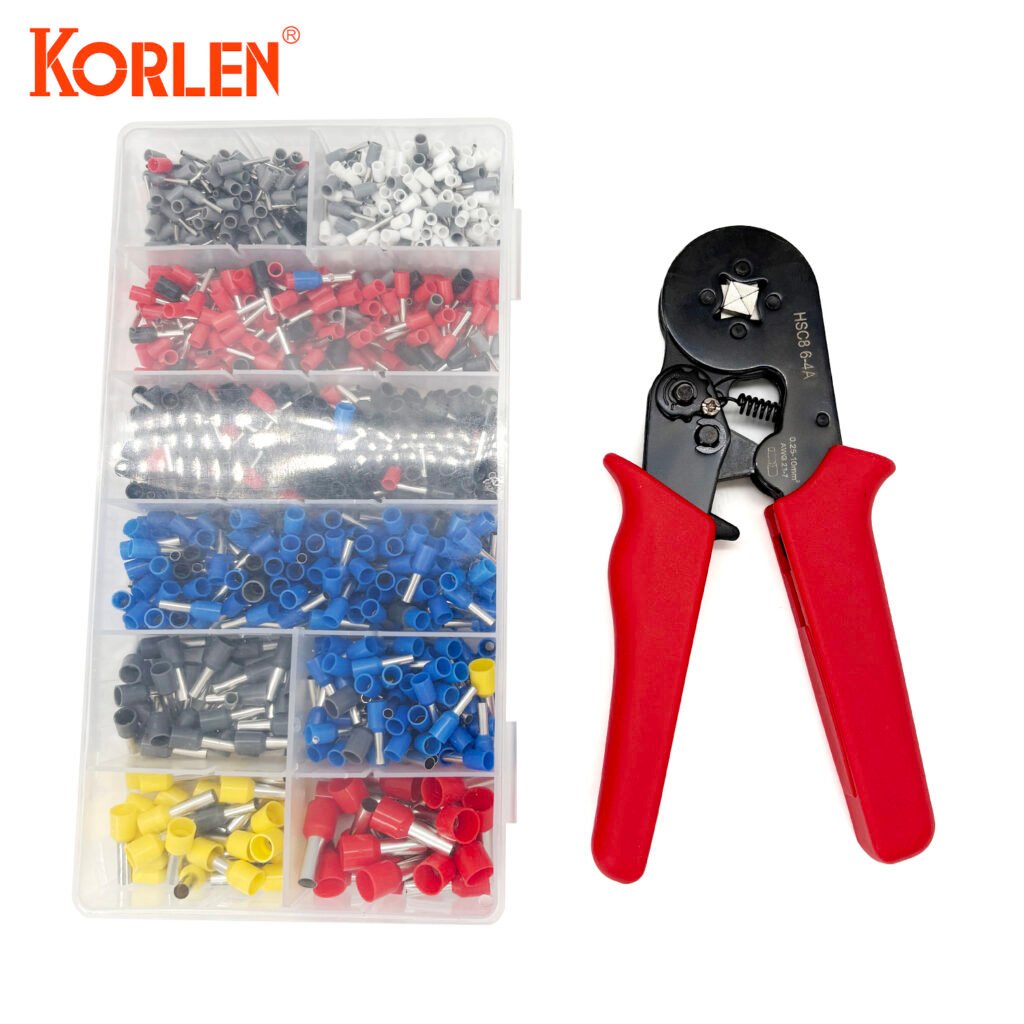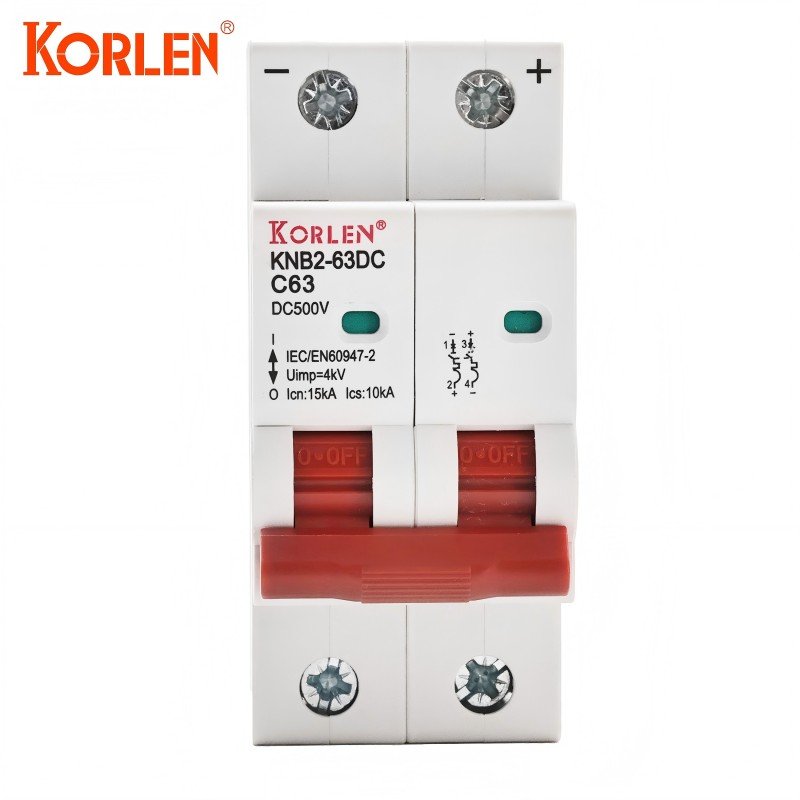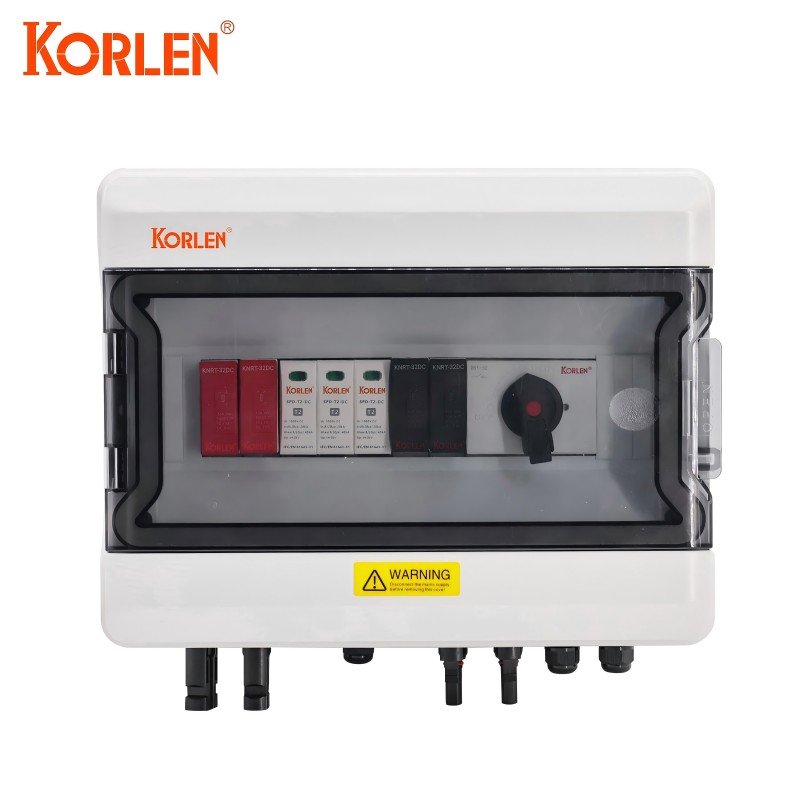
How Do I Choose the Right Distribution Box for My Needs?
Tired of confusion when selecting a distribution box? I know the feeling. Overwhelmed by options, I often worried about making the wrong choice for my projects.
Choosing the right distribution box involves matching its size to your circuit needs, ensuring key features like material and safety compliance, and selecting appropriate materials for its environment. I’ve learned that understanding these factors is crucial for a safe and efficient electrical system.
Picking a distribution box might seem complex. But don’t worry. We will break it down step-by-step. This guide will help you understand the important points. You will soon feel confident in making the best choice.
What Size Distribution Box Do I Need for My Application?
Struggling with circuit space? I’ve been there. It’s frustrating to realize midway through an installation that the box is too small for all the breakers.
To determine the right size, I always list all current circuits, add amperage, and consider future needs. This simple count helps me pick a box with enough slots. This ensures I don’t run out of space or overload the system.
Choosing the correct size for your distribution box, also known as a panelboard or breaker box, is very important. It’s not just about fitting everything in now. It’s also about planning for the future and ensuring safety. A box that is too small can lead to an overloaded system. This is a fire hazard. A box that is too large might be a waste of money and space, but it’s generally better to have a little extra room than not enough.
Key Factors in Sizing
Several factors influence the size of the distribution box you need:
Number of Circuits: This is the most basic starting point. You need to count how many individual circuits your application will require. Each circuit typically needs one slot for a single-pole breaker or two slots for a double-pole breaker (like for a 240V appliance). I make a list of all lights, outlets, and appliances.
Amperage of Circuits: While the number of slots is primary, the total load is also important. This influences the main breaker size if your box includes one.
Future Expansion: This is a big one. I always advise planning for future needs. Maybe you want to add an outdoor kitchen later. Or perhaps you’ll finish the basement. Adding 20-25% extra capacity in terms of breaker slots is a good rule of thumb. It saves a lot of hassle and expense down the line.
Physical Space: Where will the box be installed? You need to make sure the box you choose will physically fit in the designated location, with proper clearances for access and wiring.
Type of Breakers: Standard breakers, AFCI (Arc Fault Circuit Interrupter), or GFCI (Ground Fault Circuit Interrupter) breakers are usually the same size. However, some specialized breakers might be wider.
How to Calculate the Number of Spaces
Here’s a simple way I approach it:
List every planned circuit.
Note if it’s 120V (1-pole) or 240V (2-pole).
A 1-pole breaker takes 1 space. A 2-pole breaker takes 2 spaces.
Sum up all the spaces needed for your current plan.
Add a few extra spaces for spare circuits. This is very useful for troubleshooting or if a breaker fails.
Add more spaces for your anticipated future expansion (e.g., 4-8 extra spaces).
For example, if I have ten 120V circuits and three 240V circuits:
(10 circuits * 1 space/circuit) + (3 circuits * 2 spaces/circuit) = 10 + 6 = 16 spaces.
Then, I’d add 2 spare spaces and 6 future spaces, bringing the total to 16 + 2 + 6 = 24 spaces. So, I would look for a 24-space or 30-space box.
Main Lug vs. Main Breaker Panels
You’ll also encounter “main lug” and “main breaker” panels.
Main Breaker Panel: This type includes a main breaker that protects the entire panel and can shut off all power to the circuits it feeds. This is common for service entrance applications.
Main Lug Panel: This type does not have a main breaker. It is typically used as a sub-panel, fed from an upstream breaker in another panel (like a main service panel). The upstream breaker provides the overcurrent protection for the main lug panel’s busbars.
It’s important to know which type you need for your specific situation. Local electrical codes often dictate this.
Here’s a general guide, but always check local codes and consult an electrician:
| Application Type | Estimated Spaces Needed | Notes |
| Small Apartment/Condo | 12-20 | Basic lighting, outlets, few appliances |
| Average Single-Family Home | 20-40 | Standard appliances, HVAC, potential for growth |
| Large Home/Workshop | 40-60+ | More appliances, EV charger, workshop tools |
| Small Commercial Space | 30-42 | Office lighting, outlets, specific equipment |
Remember, when in doubt, going slightly larger is often the safer and more practical choice. It prevents the headache of upgrading too soon.
What Are the Key Features to Look for in a Distribution Box?
Overwhelmed by technical jargon? I used to be. I once bought a box based on price alone, only to find it lacked crucial features for my project’s environment.
I now always check for material durability (like steel for strength), NEMA rating for protection, ample wiring space, and good quality busbars, preferably copper. These features ensure longevity and safety.
A distribution box is more than just a metal or plastic container. It plays a critical role in your electrical system’s safety and functionality. When I select a distribution box, I look beyond just the size. There are several key features that I consider essential for performance, durability, and ease of use.
Essential Features to Consider
Material and Construction:
Metal (Steel): Most common for indoor applications. Steel boxes are strong, durable, and offer good fire resistance. They can be galvanized or painted for corrosion protection. I prefer these for their robustness.
Plastic (Polycarbonate, Thermoplastic): Often used for outdoor or specific environments due to their corrosion resistance. They are lighter but might not be as robust as steel in some situations. Good quality UV-stabilized plastic is important for outdoor use.
Stainless Steel/GRP: For harsh or corrosive environments, these are top choices but come at a higher cost.
Enclosure Type (NEMA Rating):
The NEMA (National Electrical Manufacturers Association) rating indicates the level of protection the enclosure provides against environmental factors like dust, water, and oil.
NEMA 1: For general indoor use, protects against contact with live parts and limited falling dirt.
NEMA 3R: For outdoor use, protects against rain, sleet, snow, and external ice formation. This is a common one I use for outdoor sub-panels.
NEMA 4/4X: Watertight and dust-tight. NEMA 4X adds corrosion resistance (often stainless steel or non-metallic). These are for more demanding outdoor or wash-down areas.
NEMA 12: Indoor use, protects against dripping non-corrosive liquids, falling dirt, and circulating dust.
Busbar Material and Plating:
The busbars are the conductive strips inside the box where the circuit breakers connect.
Copper: Excellent conductivity, corrosion resistance, and durability. Generally preferred, though often more expensive. I always opt for copper if the budget allows.
Aluminum: Lighter and less expensive than copper. It has good conductivity but can be more prone to oxidation if connections are not made properly. If using aluminum, ensure breakers are rated for Al/Cu connections and proper antioxidant compound is used.
Plating (Tin, Silver): Busbars are often plated to improve conductivity and prevent corrosion. Tin-plated copper is a common and effective choice.
Ease of Installation and Wiring:
Knockouts: Pre-punched openings for conduit or cable entry. Variety in size and location is helpful.
Mounting Options: Surface mount or flush mount. Ensure the box has suitable mounting holes or flanges.
Wiring Space: Ample room around the breakers and terminals makes wiring easier and safer. A cramped box is a nightmare to work in.
Grounding and Neutral Bars: Sufficient terminals for all ground and neutral wires. They should be clearly marked and accessible.
Safety Features:
Door/Cover: A secure door or cover prevents accidental contact with live parts. Some have latches or locks.
Dead Front Cover: An internal cover that sits over the breakers, exposing only their handles. This is a critical safety feature.
Proper Grounding Provisions: A dedicated terminal or lug for connecting the main grounding conductor.
Brand Reputation and Warranty:
Choosing a reputable brand often means better quality control, easier access to compatible breakers, and better support. A good warranty provides peace of mind. I’ve found that established brands usually have a more consistent product.
Feature Comparison: Busbar Material
| Feature | Copper Busbar | Aluminum Busbar |
| Conductivity | Excellent | Good (lower than copper) |
| Corrosion | Good resistance | More prone to oxidation if not treated |
| Weight | Heavier | Lighter |
| Cost | Higher | Lower |
| Durability | Very durable | Durable, but connections need care |
| My Preference | Preferred for critical applications | Acceptable with proper installation |
When I evaluate a distribution box, I consider how these features align with the specific needs of the project. For example, for a simple indoor sub-panel, a NEMA 1 steel box with tin-plated copper busbars might be perfect. For an outdoor installation near the coast, I’d look for a NEMA 4X box made of stainless steel or high-quality GRP. It’s about finding the right balance of features, performance, and cost.
How Do I Choose a Distribution Box That Meets Safety Standards?
Worried about safety compliance? I get it. The thought of an electrical mishap due to a non-compliant box is a serious concern for any professional.
I always look for recognized certification marks like UL or CE on the box and its label. These marks mean it has been tested to meet specific safety standards. This gives me confidence in its safety.
Ensuring that a distribution box meets safety standards is not just a recommendation; it’s a critical requirement. Electrical systems, if not properly installed with certified components, can pose significant risks, including electrical shock, fire, and equipment damage. When I choose a distribution box, safety compliance is my top priority. I always verify that the product adheres to recognized industry standards.
Understanding Certifications and Markings
The most reliable way to know if a distribution box meets safety standards is to look for certification marks from accredited testing laboratories. These marks indicate that the product has undergone rigorous testing and meets the specific safety and performance criteria set by the standard.
UL (Underwriters Laboratories): This is a very common mark in North America. A UL Listed mark means the product has been tested by UL to nationally recognized safety standards and found to be free from a reasonably foreseeable risk of fire, electric shock, and related hazards. I always look for this on boxes I use in the US.
CE (Conformité Européenne): This mark indicates conformity with health, safety, and environmental protection standards for products sold within the European Economic Area (EEA). If I were working on a project for Europe, this would be essential.
IEC (International Electrotechnical Commission): IEC standards are widely adopted internationally. Many national standards are based on IEC standards. A distribution box conforming to relevant IEC standards (like IEC 61439 for low-voltage switchgear and controlgear assemblies) is a good indicator of quality and safety.
Local Electrical Codes: Beyond these general certifications, it’s crucial to be aware of and comply with local electrical codes (e.g., the NEC – National Electrical Code in the US). These codes often specify particular requirements for distribution boxes in different applications.
Key Safety Aspects to Verify
Proper Grounding and Bonding: The distribution box must have adequate provisions for grounding and bonding. This ensures that any fault currents have a safe path to the earth, minimizing the risk of electric shock. Look for clearly marked grounding bars and lugs.
Short Circuit Current Rating (SCCR): The box, and the entire assembly including breakers, should have an SCCR that is equal to or greater than the available fault current at its point of installation. This is crucial to prevent catastrophic failure during a short circuit.
Enclosure Integrity: As discussed with NEMA ratings, the enclosure must be suitable for the environment to protect internal components and prevent accidental contact with live parts.
Material Flammability: Materials used in the construction of the box should have appropriate flame retardant properties.
Clear Labeling: The box should have clear and durable labeling that includes manufacturer information, electrical ratings (voltage, current, SCCR), and certification marks.
Why Certification Matters
Certification isn’t just a piece of paper. It means:
Independent Testing: The product has been evaluated by an unbiased third party.
Ongoing Compliance: Manufacturers are often subject to follow-up inspections to ensure continued adherence to standards.
Reduced Liability: Using certified components can help reduce liability in case of an incident.
Peace of Mind: Knowing that the product has met stringent safety requirements allows for greater confidence in the installation.
Avoiding Counterfeit or Substandard Products
Unfortunately, counterfeit electrical products exist. These products may look genuine but often use inferior materials and do not meet safety standards.
Buy from Reputable Sources: I always purchase from authorized distributors or directly from trusted manufacturers like my company, Korlen. This significantly reduces the risk of getting counterfeit goods.
Inspect the Product: Look for clear, professional labeling and quality construction. Poorly printed labels, flimsy materials, or ill-fitting parts can be red flags.
If in Doubt, Ask: If a deal seems too good to be true, or if you have any doubts about a product’s authenticity or compliance, it’s best to ask for documentation or choose an alternative.
Ultimately, consulting with a qualified electrician or electrical inspector is always a good idea, especially for complex installations or if you are unsure about specific local requirements. Their expertise can help ensure your entire electrical system, including the distribution box, is safe and compliant.
What Materials Are Best for Distribution Boxes in Outdoor Settings?
Confused about which material withstands the elements? I’ve seen outdoor boxes rust and fail quickly when the wrong material was chosen for the environment.
For outdoor settings, I prioritize materials like stainless steel or high-quality, UV-stabilized polycarbonate or GRP. These offer the best resistance to moisture, UV rays, and temperature changes.
Outdoor environments present unique challenges for electrical enclosures. Distribution boxes installed outside are exposed to a range of harsh conditions, including moisture (rain, snow, humidity), ultraviolet (UV) radiation from the sun, temperature fluctuations, dust, and potentially corrosive elements like salt spray in coastal areas or chemicals in industrial zones. Selecting a distribution box made from the right material is crucial for its longevity, safety, and the protection of the electrical components inside.
Common Environmental Challenges Outdoors
Moisture Ingress: Rain, snow, and high humidity can lead to water entering the enclosure, causing corrosion, short circuits, and equipment failure.
UV Degradation: Sunlight, specifically UV radiation, can degrade certain plastics over time, making them brittle and prone to cracking.
Temperature Extremes: Materials must withstand expansion and contraction due to wide temperature swings without warping or cracking.
Corrosion: Salt in coastal areas, pollutants in industrial environments, or even just prolonged exposure to moisture can cause metal boxes to rust and deteriorate.
Physical Impact: Depending on the location, the box might be subject to accidental impacts.
Suitable Materials for Outdoor Distribution Boxes
Stainless Steel:
Pros: Excellent corrosion resistance (especially grades like 304 or 316 for marine environments), very durable, strong, and withstands a wide range of temperatures. I often recommend stainless steel for long-term reliability in tough conditions.
Cons: More expensive than other materials, can be heavier.
Best For: Coastal areas, chemical plants, food processing facilities, and any application requiring high durability and corrosion resistance. NEMA 4X rating is common.
Polycarbonate:
Pros: Excellent impact resistance, good UV resistance (if properly stabilized), lightweight, non-corrosive, and often more cost-effective than stainless steel. It’s also an insulator.
Cons: Can be scratched, and lower-quality polycarbonate might yellow or become brittle over many years of intense UV exposure if not adequately treated.
Best For: General outdoor applications, telecommunications, areas where non-conductivity is a plus. Look for NEMA 3R, 4, or 4X ratings.
GRP (Glass Reinforced Polyester/Fiberglass):
Pros: Extremely high resistance to corrosion and chemicals, strong, lightweight, and good for a wide temperature range. GRP is a fantastic choice for very harsh environments.
Cons: Can be more expensive than standard plastics, might become brittle under extreme impact in very cold temperatures if not formulated for it.
Best For: Chemical plants, wastewater treatment facilities, marine environments, and locations with high exposure to corrosive substances. Often carries NEMA 4X rating.
Coated Carbon Steel (e.g., Galvanized or Painted):
Pros: Strong, relatively inexpensive.
Cons: The coating is critical. If the paint or galvanization is scratched or damaged, the underlying steel will rust. Not ideal for highly corrosive environments or long-term exposure without maintenance.
Best For: General outdoor use in mild to moderate environments where cost is a major factor. NEMA 3R is common. I’d be cautious using this in very wet or salty areas.
NEMA Ratings are Key for Outdoor Use
Regardless of the material, the NEMA rating is paramount for outdoor boxes.
NEMA 3R: Protects against falling rain, sleet, snow, and external ice formation. Suitable for many general outdoor applications where direct hosing down isn’t expected.
NEMA 4: Watertight; must exclude at least 65 GPM of water from a 1-inch nozzle delivered from a distance not less than 10 feet for 5 minutes.
NEMA 4X: Watertight and corrosion-resistant. This is the gold standard for many challenging outdoor or wash-down environments.
Material Suitability Table for Outdoor Environments
| Environment | Recommended Materials | Key Considerations |
| General Outdoor (Mild) | Polycarbonate, Coated Carbon Steel | UV resistance, moisture protection (NEMA 3R/4) |
| Coastal/Marine | Stainless Steel (316), GRP | High corrosion resistance (NEMA 4X) |
| Industrial (Chemical) | GRP, Stainless Steel | Chemical resistance, robust (NEMA 4X) |
| High UV Exposure | UV-Stabilized Polycarbonate, GRP, Stainless Steel | Material stability under sunlight |
| Extreme Temperatures | Stainless Steel, GRP (check specs) | Material integrity across temp range |
When I’m specifying a box for an outdoor project, I first assess the specific environmental conditions it will face. Then, I match those conditions with a material and NEMA rating that offers the best balance of protection, durability, and cost. For instance, for a solar PV combiner box that will be exposed to sun and rain for 20+ years, I would lean heavily towards high-quality UV-stabilized polycarbonate, GRP, or stainless steel.
Conclusion
Choosing the right distribution box means considering size, features, safety standards, and material. This ensures a safe, reliable, and long-lasting electrical installation for your specific needs.We are a manufacturer with 20 years of experience. If you want to know more product information or get solutions, you can contact us at any time.







